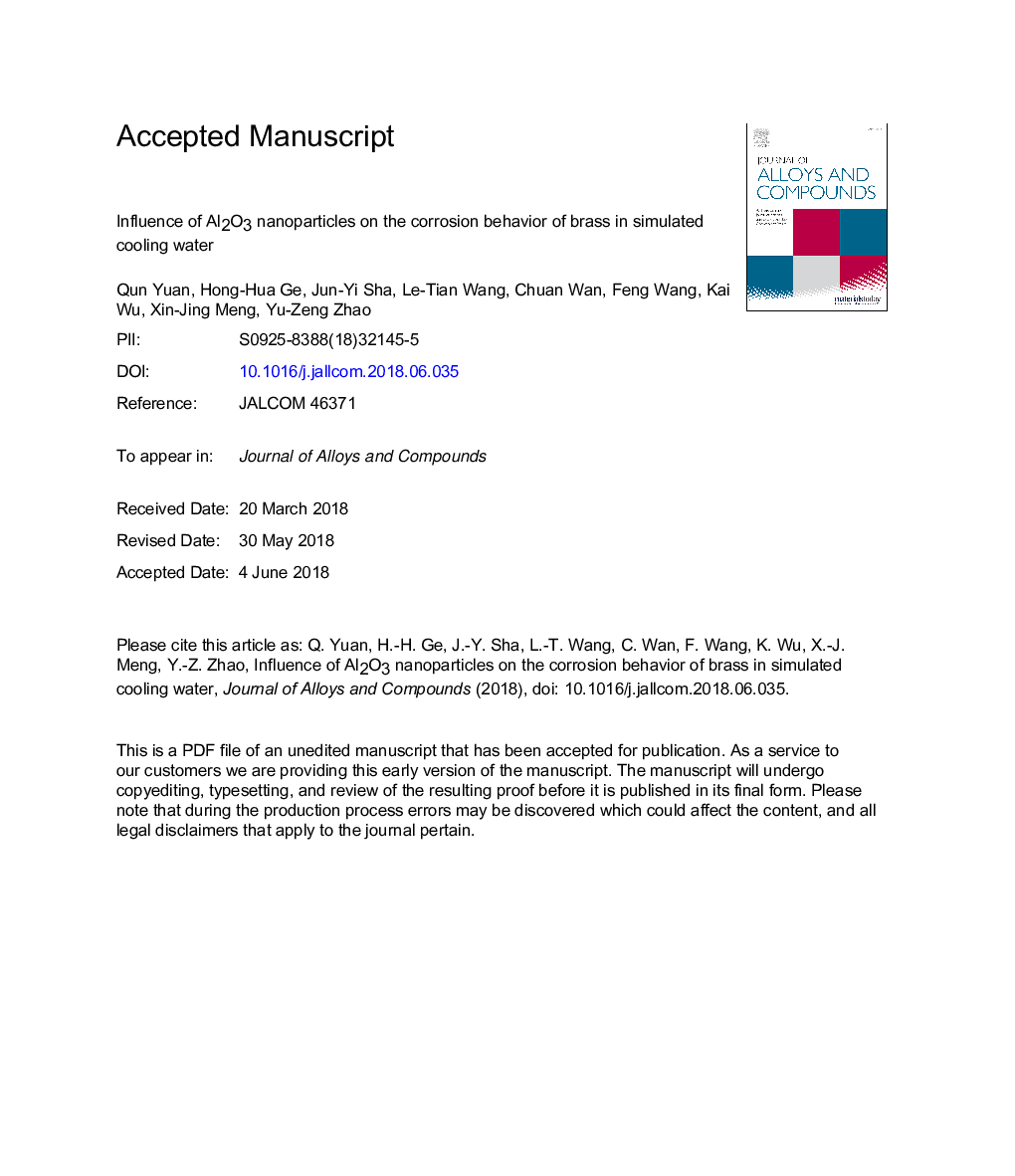| Article ID | Journal | Published Year | Pages | File Type |
|---|---|---|---|---|
| 7990693 | Journal of Alloys and Compounds | 2018 | 43 Pages |
Abstract
The influence of Al2O3 nanoparticles on the corrosion behavior of brass in simulated cooling water (SCW) with or without sodium dodecyl benzene sulfonate (SDBS) was investigated by means of electrochemical impedance spectroscopy, polarization curves, scanning electron microscope, energy spectrum analysis, X-ray diffraction and Fourier transform infrared spectroscopy. Results indicate that the brass suffered severe corrosion in SCW and the SCW-Al2O3 nanofluid. The main corrosion product was Zn5(OH)6(CO3)2. Al2O3 nanoparticles promoted both anodic and cathodic processes in the brass electrode, and dezincification was most serious in the SCW-Al2O3 nanofluid. The adsorption of SDBS on the brass surface was enhanced, and a more compact protective film was formed on the brass surface in the SCW-Al2O3-SDBS nanofluid. As a result, the corrosion resistance of brass was increased in this medium.
Related Topics
Physical Sciences and Engineering
Materials Science
Metals and Alloys
Authors
Qun Yuan, Hong-Hua Ge, Jun-Yi Sha, Le-Tian Wang, Chuan Wan, Feng Wang, Kai Wu, Xin-Jing Meng, Yu-Zeng Zhao,
